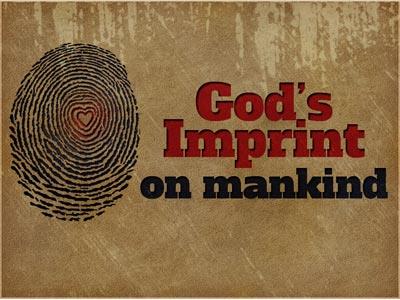-
The Colossal Image Series
Contributed by Glenn Pease on Mar 22, 2021 (message contributor)
Summary: In the dream of Nebuchadnezzar we see in the miraculous stone's demolishing of the colossal image the triumph of the kingdom of God over the kingdoms of men.
If we say something is big we assume we have said something
important. If the grand stand is packed with the biggest crowd ever,
this is a big deal, even if the game was not worth seeing. The big
blast is all the rage on the screen or on the stage. Everything has to
be gigantic to get our attention, for we are brainwashed into thinking
that only the big is of real value. Hollywood never makes anything
less than spectacular. Everything is advertised as bigger and better
than ever. New terms have to be coined to keep up with the trend
toward the idolatry of the big.
W. J. Bryan says, "There are three kinds of larceny-petty
larceny, grand larceny, and glorious larceny. Glorious larceny is
thieving on such a large scale that its brilliant success atones for its
moral crookedness." When men worship bigness they care not if it
be evil or good just so long as it is big. The little lie will be rejected,
but Hitler proved that men will fall down and worship before the big
lie. Booth Tarkington has put the prayer of modern man's idolatry
into words:
Give me of Thyself, O Bigness,
Power to get more Power;
Riches to get more Riches;
Give me Thy sweat to get more sweat.
Give me of Thy Bigness to get more Bigness for myself.
O Bigness, for Thine is the Power and the Glory,
And there is no end but Bigness, forever and ever.
Man has really always been this way in his love for bigness. It is
just that today he has greater opportunity and a greater variety of
bigness. Nebuchadnezzar was a fanatic for bigness in his big city of
Babylon with its mighty walls and tremendous temples. The ancient
world went in for bigness in a big way. From the tower of Babel on
man has tried to build something so big that it would be the wonder
of the world and last forever. These Goliath works of man are
always built on clay feet, however, and they crumble when struck by
one stone aimed by one of God's Davids. This is what the dream of
Nebuchadnezzar is all about. It is about the colossal kingdoms of
men being demolished by the kingdom of God. A huge image of gold,
silver, bronze, iron and clay represents the 4 world empires from
Nebuchadnezzar to the coming of Christ. Here is real bigness, for
these 4 were the only 4 to ever rule the whole known world.
One of the amazing aspects of the book of Daniel is that it
predicts that there would be only 4 such universal powers before Christ,
and then no more after His coming. History has confirmed
this, for since the fall of the Roman Empire there has never again been
a nation that ruled the world. There have been great empires like the
British on which the sun never set, but no king of England has ever
been the king of the world. There were 4 universal kingdoms in a
row and then no more. Daniel's interpretation of Nebuchadnezzar's
dream gives us an outline view of history up to the coming of Christ.
The stone of Christ brought all of the bigness crashing down into
dust and His kingdom began to replace them by spreading into all
the world to become the fifth and final universal kingdom built on a
solid rock foundation, which would make it the only eternal kingdom
that would never pass away.
The King said to his army, "Go into all the world and win men
to my allegiance." Jesus, without force and destructive weapons,
intended to build the greatest kingdom of all so that loyal subjects
will bow to him as king out of every nation, tribe and language.
Jesus thinks big also, but His bigness is based on growth and the
winning of individuals one by one, and not the bigness gain by force
like the kingdoms of the world. Force is faster, but it always has a
foundation of clay that will bring it to destruction. The way of Christ
is slow but sure, and His kingdom will have no end. This is a brief
summary of the significance of the colossal image of
Nebuchadnezzar's dream.
This great image represented nations. It was common for
ancient coins to contain human figures to represent the nation. We
do it yet today when we use Uncle Sam to symbolize our nation. This
image was so big and so bright that it was frightening even before
Nebuchadnezzar knew what it meant. How much more frightening it
must have been when he knew this giant statue would tumble and be
demolished. Keble wrote,
In outline dim and vast
These fearful shadows cast,
The giant forms of empire on their way

 Sermon Central
Sermon Central



